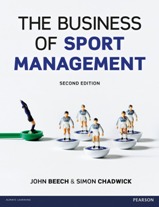The 2011/12 season has been characterised by long-running sagas. Normally I find myself in an annual review recounting a series of relatively self-contained accounts of the woes which have beset a number of clubs, but many of those listed below are far from resolved scenarios.
The selection is not systematic – it consists of the clubs who have found themselves on my radar screen; further suggestions are welcomed.
Ashford Town
For a club to have its two co-owners feuding (1) was always likely to lead to tears before bed-time. Add to this a withdrawal from its league in 2010 (2) and there is a clear downward pattern. This July HMRC issued a winding-up petition (3).
Billingham Town
A long dispute with Hartlepool over who should pay for improvements to the Billingham stadium (4) had been resolved in December 2010, but in January this year Billingham sought to wind themselves up (5). However, HMRC then stepped in with their own winding-up petition (6). The former of the these two seems to have been granted in April (7), but nonetheless the club is still is playing. Any insight into what has happened would be much appreciated.
Coventry City
Coventry City have faced financial problems since their relegation from the Premier League in 2001, not least because of the development of the Ricoh Arena, a less ambitious materialisation of what had originally been called Arena 2000, originally designed with a retractable roof and a removable pitch (8). In 2007, in a moment of financial crisis with the club having announced its intention to go into Administration, it was bought by venture capitalists SISU. Since then SISU has failed to inject enough money to buy back the Rich from the local council and a local charity.
SISU have struggled to find the right balance between economising and maintaining team performance, thus causing complaints from fans. The financial struggle led to SISU stopping paying the rent for the stadium in April this year in an attempt to force a lower a rental. The confrontation was resolved in court last month, but details have not been made public (9).
Croydon Athletic
The imprisonment of owner Mazher Majeed for his part in cricket’s ‘spot-fixing scandal’ last November (10) made the club unsustainable. It was promptly fined and deducted 10 points (11), adding another straw to an already broken back. Unable to find a new owner, the club withdrew from the Isthmian League, unable to fulfil its fixtures (12). A resurrection club, AFC Croydon Athletic, has been formed however (13).
Darlington
A sorry tale of desperation and despair, covered in postings passim and on the TwoHundredPerCent website, but eventually one of hope. In early May fans group Darlington 1883 finally succeeded in taking over the club (14), but at what a price – the club had been forced into exile (15 and 16), and demoted to the Northern League Division 1 (17). Onwards and upwards!
Harlow Town
Another sorry tale, this time tied up with the owners’ divorce (18 and 19; note the dates). The club entered a CVA back in September 2009 (20). Last November the club faced a winding-up order from HMRC (21), but this was finally dismissed in February. In the same month, new owners had taken over (22). Any further insight from local readers would be appreciated.
Kettering Town
Not the ultimate car crash – that comes lower down the posting – but certainly one of the most dragged cases. See postings passim and on the TwoHundredPerCent website. The season just finished was yet another traumatic one.
Having started the season by going into exile at the former Rushden & Diamonds stadium in Irthlingborough, less than ten miles away, there seems to have been no synergy in attracting new fans, as is reflected in the appearance of fan-owned AFC Rushden & Diamonds, also in exile, at Wellingborough, ground-sharing with Wellingborough Town, less than five miles from Irthlingborough.
Debts built up, and in June the club had to enter a CVA, with debts reported to be £1.2m (23), and HMRC hot on the club’s heels (24).
Meanwhile, want-away owner Imran Ladak had handed over the reins to ‘acting Chairman’ George Rolls, at least, until he was suspended from football for five years by the FA (25). Ritchie Jeunne took over as Chairman (26), albeit extremely briefly, and now, in a Chainraiesque twist, Ladak is back (27). The long-suffering Poppies Trust continue to fight on doggedly (28) notwithstanding demotion and a 10 points penalty (29).
Neath
Chased over debts by HMRC and then Barclays (30), the Welsh Premier League club was wound up at the end of May (31).
Northwich Victoria
Another depressing season for the clubs’ fans – evicted from their stadium (32), and then a crazy saga about where they could and couldn’t play (33), and expulsion from the Northern Premier League (34). You couldn’t make it up.
Plymouth Argyle
It seems some time ago now, but the final chapter in the club’s survival was last October, and so within last season. Mark Murphy has a neat summary of events here.
Port Vale
Yet another long-running saga – see postings passimandTwoHundredPerCentfor details. Notable events and non-events during the 2011/12 season were the appointment of an Administrator in March (35), the lack of an attempt to take over by long-time suitor Mo Chaudry (36) and the Administrator’s misplaced faith in Keith Ryder as a potential owner (37).
Portsmouth
Here we go yet again. The ‘club as company’ has been, more or less continuously, the basket case of English football for the past four decades, and this last season has proved no exception, with the arrest of the latest owners in November (38) and a now familiar drop into Administration in February. I’m going to hold back in my lengthier comments for the moment as we seem to be on the point of either the start of a new chapter in the saga or dénouement.
Suffice it to say, in the red corner is Balram Chainrai, threatening to ‘save the club again’. To me this is a bit like ‘giving up smoking’ – you can’t logically apply the phrase on more than one occasion. In the blue corner is the Pompey Supporters Trust (vested interest declared – I have made a pledge to buy shares, and would urge all Pompey fans to do likewise here)
Prescot Cables
In an act all too rare in English football, the supporter-owned club took the difficult but realistic decision to return to amateur status (39).
Rossendale United
Effectively defunct at the end of the previous season, the club still appeared on my radar screen. In March the club was still being chased for £37,000 by HMRC (40). In January the defunct stadium had been gutted by fire (41), and the next month the owner, Andrew Connolly, had announced plans to redevelop the site with 50 new houses (42). This forced the abandonment of plans for a resurrection club (43)
Rothwell Town
Which is, by the way, five miles from Kettering and thirteen from Irthlingborough. In May 2010 the club had withdrawn from the Southern League due to financial difficulties (44), and a mooted rescue did not materialise (45). Last October the club went into Administration (46), and in March the ground was put up for sale (47). As far as I can make out, there have been no further substantive developments – again any local input would be appreciated.
Stockport County
Yet another season of uncertainty for County (see postings passim and TwoHundredPerCent). The end of a ground-sharing agreement for Edgeley Park with Sale Sharks will have added to the financial pressures (48).
Truro City
An interesting case of amazing success on the pitch, driven by a ‘benefactor’, which has proved unsustainable (49). The club has been pursued by HMRC (50), struggled to play its players (51), and at the start of the current season has had to seek protection through Administration (52). Two mysteries remain – the involvement of the Salisbury City Chairman, William Harrison-Allison (53), and the sale of the ground (54). The timing of the latter will guarantee that this story has legs.
Widnes
The joker in this particular pack, destined to be an obscure name that only reappears occasionally in pub quizzes. It marks an attempt by Steven Vaughan, he of Barrow, Chester and at one time allegedly Wrexham fame (see postings passim), through his son, to create a football club from scratch. Originally to be called Widnes Town (55), it had to change its name on the not unreasonable grounds that Widens Town already existed (56). Finding a ground to pay at proved challenging (57) and Stephen Vaughan seems to have opted to weave his own very particular brand of football magic in Malta instead (58).
Very roughly, the clubs involved fall into two groups. First here are the League clubs. Here there seems to be a continuing trend of slightly fewer clubs getting into financial difficulty, but those that do do so on a grand scale, and perhaps do so on a kind of cyclical basis – one crisis leads directly to the next one.
The second group, the non-League clubs, frequently display Benefactor Withdrawal Syndrome (BWS). The unsustainability of this business model becomes particularly problematic when the ‘benefactor’ has lifted the club up the pyramid to a level where his withdrawal makes survival especially difficult. Clubs like Crawley Town and Fleetwood are surely vulnerable to BWS, not to mention the League and Premier League clubs of much longer standing who have become benefactor-dependent.
When I started preparing this posting, I did so with as close to a sense of cautious optimism as I manage. With the natural exception of Portsmouth, surely things were beginning to look a little rosier in the football football finance garden. Having completed it, I’ve fallen back to more usual mood of pessimism, wondering when club owners are going to get a grip and face reality (full marks to Prescot Cables as an exception). Not that aren’t some good practice stories out there – Wrexham and Chester provide the most encouraging examples.
At least fifteen years ago I wondered ‘when the bubble was going to burst’. This has obviously proved the wrong metaphor. Suggestions for a more appropriate one are welcomed.



